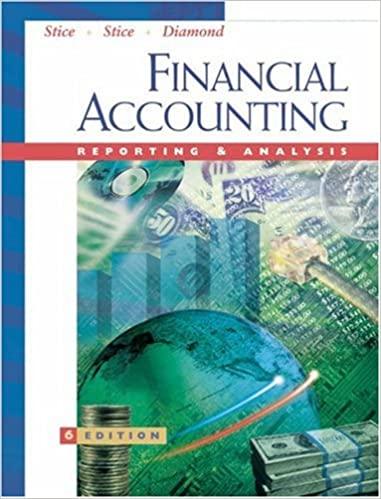Gap, Inc. provided the following notes (excerpts) in its 1997 financial statements: Note F: Employee Benefit And
Question:
Gap, Inc. provided the following notes (excerpts) in its 1997 financial statements:
Note F: Employee Benefit And Incentive Stock Compensation Plans Retirement Plans The company has a qualified defined contribution retirement plan, called GapShare, which is available to employees who meet certain age and service requirements. This plan permits employees to make contributions up to the maximum limits allowable under the Internal Revenue Code. Under the plan, the company matches all or a portion of the employee’s contributions under a predetermined formula. The company’s contributions vest over a seven-year period. Company contributions to the retirement plan in 1997, 1996, and 1995 were $12,907,000, $11,427,000, and $9,839,000, respectively.
A nonqualified executive deferred compensation plan was established on January 1, 1994 and a nonqualified executive capital accumulation plan was established on April 1, 1994. Both plans allow eligible employees to defer compensation up to a maximum amount defined in each plan. The company does not match employees’ contributions.
A deferred compensation plan was established on August 26, 1997 for nonemployee members of the board of directors. Under this plan, board members can elect to defer receipt on a pre-tax basis of eligible compensation received for serving as nonemployee directors. In exchange for compensation deferred, board members are granted discounted stock options to purchase shares of the company’s common stock. All options are fully exercisable upon the date granted and expire seven years after the date or one year after retirement from the board, if earlier. The company can issue up to 300,000 shares under the plan.
Incentive Stock Compensation Plans The 1996 Stock Option and Award plan (the “Plan”) was established on March 26, 1996. The board authorized 41,485,041 shares for issuance under the Plan, which includes shares available under the Management Incentive Restricted Stock plan (MIRSP) and an earlier stock option plan established in 1981, both of which were superseded by the Plan. The Plan empowers the Compensation and Stock Option Committee of the board of directors to award compensation primarily in the form of nonqualified stock options or restricted stock to key employees. Stock options generally expire 10 years from the grant date or one year after the date of retirement, if earlier. Stock options generally vest over a three-year period, with shares becoming exercisable in full on the third anniversary of the grant date. Nonqualified stock options are generally issued at fair market value but can be issued at prices less than the fair market value at the date of grant or at other prices as determined by the committee. Total compensation cost for those stock options issued at less than fair market value under the Plan and for the restricted shares issued under MIRSP was $17,170,000,
$22,248,000, and $23,743,000 in 1997, 1996, and 1995, respectively.
Step by Step Answer:

Financial Accounting Reporting And Analysis
ISBN: 9780324149999
6th Edition
Authors: Earl K. Stice, James Stice, Michael Diamond, James D. Stice





